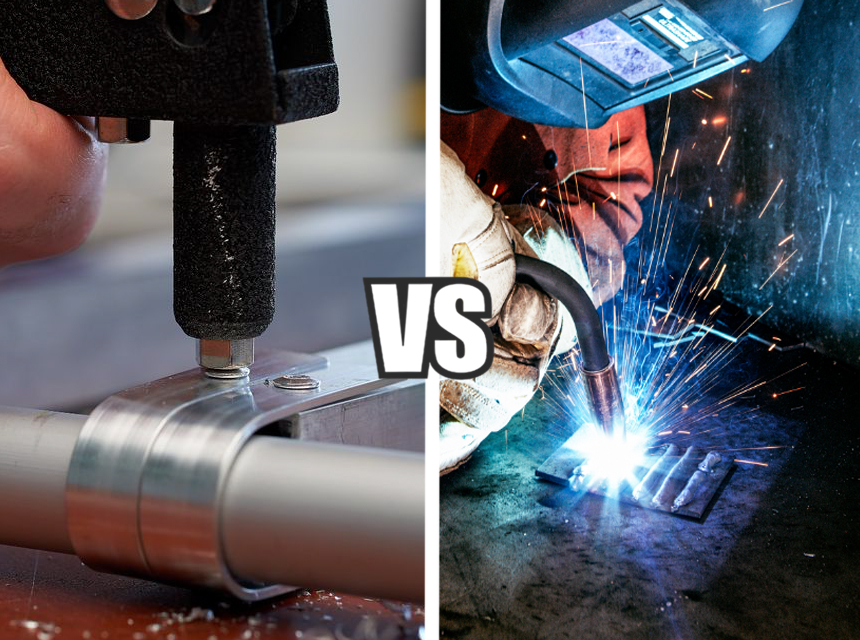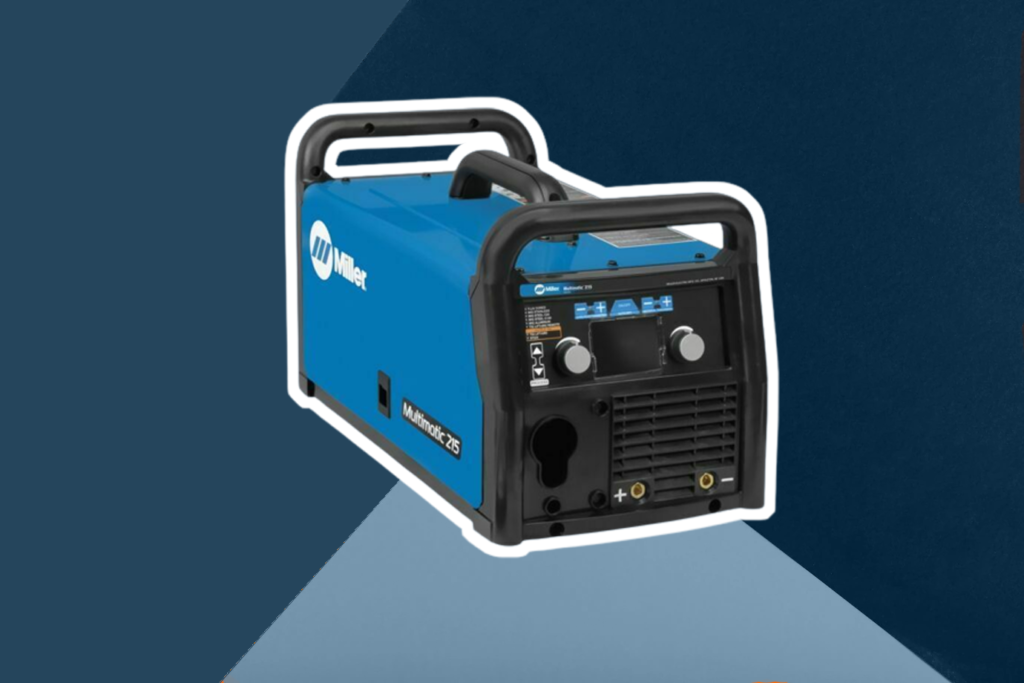

One of the most critical decisions you will face when building your roll cage is what kind of welder to use. We examined a variety of welding machines to determine the best welder for roll cages.
From a safety standpoint, the different processes for welding do not matter much. Whether you prefer MIG, flux-cored, stick, or TIG is entirely up to you. However, as roll cages will add to the overall weight of your racing vehicle, and less weight gives better performance, it would be wise to consider which welding method would yield the most structurally sound and lightweight assembly, this is often MIG or TIG welds. In evaluating the five welders below, the essential features we considered when ranking the best welders for roll cages are price, power, and ability to use different types of welds.
More features: portable, lightweight, easy to use
The Forney Easy Weld 261 earns our top marks for favorite entry-level welder. While not explicitly marketed to welders with no experience, this model is great for beginner and novice welders interested in light to medium welding. This makes the Forney Easy Weld 261 our pick for Editor’s Choice.
This welder is powerful, portable, and incredibly convenient. This model is best suited to do-it-yourselfers, maintenance, repair, metal fabrication, and hobbyists. It will also appeal to those looking for a lightweight, portable MIG welder, as its 19 pounds is easy to tote around – whether in your home shop or in the field from a job site to a job site.
More features: dual voltage inputs, lightweight, advanced settings
This machine is an excellent choice for repair and light fabrication. With dual voltage inputs (120V or 230V), you can plug into any standard power supply and be all set. The Lincoln Electric Powermig 210 Mp is our choice for Premium Pick.
The Lincoln Electric Powermig 210 Mp is best for those who need multifunction welding capabilities, as it is a good all-around unit for flex, MIG and stick welding.
More features: multi-use, portable, advanced IGBT inverter technology, leading control mode
The DekoPro 110/220V MMA Welder is robust and compact, easy to use and transport, and offers top-rated performance at a very competitive price. As a result, this machine is our pick for Best Value as the DekoPro 110/220V MMA performs better than some of its premium competitors.
This welder is best for those who need a high-performing machine with minimal size and easy portability. Thanks to the DekoPro 110/220V MMA’s maximum duty cycle of 60%, the welder only needs to be rested for 4 minutes every 10 minutes of operation, which is remarkable for a welder costing a little over $100.
More features: HF start hand torch control and precise foot pedal
The Primeweld TIG225X features 224 AMPS of AC/DC TIG welding with stick function, which allows the professional welder and hobbyist a wide range of uses. This machine also offers pulse function for work on aluminum, stainless steel, and thinner metals. These features earned the Primeweld TIG225X our ranking of Most Versatile.
This Primeweld model is best for those most interested in TIG welding, which is most well-known for the beautiful beads it lays down. The TIG process shines on any exposed joints.
More features: dual voltage, lightweight, portable, certified by ETL
The YesWelder TIG-205DS HF is a powerful, easy-to-handle high-frequency TIG machine. This robust machine is very compact and lightweight, and its ergonomic handle offers exceptional portability. The YesWelder TIG-205DS HF is ideal for field applications, making it our pick for Most Portable.
Allowing for connection to 110- or 220-volt receptacles, this machine is portable in the job or at the job site. Weighing only 13 pounds, the YesWelder TIG-205DS HF is best for repair and fabrication and will appeal most to those who need a portable, lightweight, compact, and powerful welder to move easily from one location to another.
We have summarized many important specifications and features in our comparison table as well as in our more detailed product reviews. However, we include more details for your consideration below.
There are three types of welders that will be sufficient for roll cages: Stick, TIG, and MIG Welders. What are the differences between the two?
TIG welding (or inert tungsten gas) is perhaps one of the more versatile of the two.
MIG welding takes longer in terms of lead times. As far as production costs go, MIG welding will lead to more. If you have the money to cover such costs, you could go for a MIG welder. Despite this, MIG welding offers better control, better precision and ensures a strong weld. One of the more reliable welders for those who prefer MIG could be the Lincoln Electric Power MIG 210 Mp.
Stick welding may be one of the oldest and simplest styles of welding in existence. It’s even one of the more cost-efficient as well. In terms of versatility, it’s even more versatile compared to TIG welding. Even better is that it doesn’t require you to use any kind of shielding gas. It will also work outdoors, even if the conditions are rather breezy.
Of course, the DEKOPRO 110/220V MMA Welder is the only option for a stick welder. If stick welding sounds like the way to go, there may be no other welder like this to go with. Especially when it allows you to weld almost any kind of material you can get your hands on. The only downside is some sanding and additional cleaning. But it won’t be much of an issue compared to MIG or TIG welding.
The output is defined as the size of the welder. It also factors in the use of amps, voltage, and the duty cycle. The output will depend on the type of welder you have. MIG welders will have a lesser voltage output in comparison to TIGs, which have more.
The output matters because you can only weld for a certain period of time per cycle. For example, if you have an output of 150 amps with a duty cycle of 30 percent, you’ll have three minutes to weld out of ten. However, at a higher amperage output and low duty cycle, it may be lower.
When looking for welders, pay close attention to the duty cycle if such information is available. Low duty cycle and high output will always equal shorter welding times (i.e., 1 or 2 minutes per 10).
The Forney Easy Weld may be the better option if you are looking for longer welding times. This is because it has less output. If you believe in “the longer the welding time, the better,” that’s a welder to go with.
Meanwhile, the Primeweld TIG225X may have less welding time because of the high level of output. You could expect to go 1 to 2 minutes of welding per ten minutes at best.
When it comes to usage, it depends on the purpose of what you are using the welder for. Whether it’s for hobbies or industrial/professional work, there’s always a welder that will be fitting for each purpose.
The YESWelder TIG-205 DS HF may be the best of the bunch for hobbyists. It’s also great for the beginner-level welder just starting out. Plus, it will give you enough welding time for almost every project.
Almost any TIG welder will be good enough for those with experience and looking for professional-grade performance. As such, the Primeweld TIG-225 X may be a good choice.

The smaller and lighter it is, the better it will be for portability. While a few of these are portable, the Forney Easy Weld is one of the top choices if you want to lug it around from one place to the next.
Things can happen to your welder, and it can be beyond your control. That’s why it’s so important to have a warranty that will be honored when you need to replace it with something new. The longer the warranty, the better.
The Lincoln Electric PowerMig has a three-year warranty, which will give you enough time to have it replaced or repaired whenever something happens to it. Keep in mind that there may be stipulations in place that can cancel the warranty at any time. Likewise, certain damage or improper use will not be covered by the warranty itself.
Before you even think of welding, you must have the right gear. This includes a fire-resistant jacket, safety glasses, welding gloves, and a welding helmet. Also, make sure you have a well-ventilated space in which to practice welding and be sure flammable materials are kept far away from your workstation.
It is also very important to learn about the materials you want to weld in order to make sure you use the right welding method for the materials you wish to use. Some processes require additional tools, while others do not. And keep in mind that you can always contact the manufacturer of your materials for more information when necessary.
There are many different models of roll cages, with specific applications calling for specific designs. How well a roll cage protects the driver depends significantly on its design.
Popular Mechanics Trusted Source Extreme How-To Skills - How to Weld a Roll Cage A roll cage is a specially-constructed tubular frame built in or around the cab of a vehicle to protect its occupants from injury in the case of an accident or rollover. A standard feature in race cars and stunt cars, roll cages are made of steel tubing and include a geometric design to enhance stability and strength. www.popularmechanics.com suggests that a simple four-point cage can be built in a day. A four-point cage is one that anchors to the floor or frame of the vehicle in four places. There are also options for six-point, eight-point, ten-point, twelve-point, and fourteen-point roll cages, all of which are so named because of the number of points at which they anchor to the vehicle. Six-point and beyond are more involved designs and can take days or weeks to build, depending on your skill level, the design of the roll cage, and your access to materials.
You may also find it helpful to have a level, a permanent marker, a carpenter angle finder, and instructions, or even a CAD drawing of your desired roll cage.
You will also need to have your safety gear – including a fire-resistant jacket, safety goggles, a welding helmet, and welding gloves. These items are non-negotiable.
In our view, the best welders for roll cages match our selections for Editor’s Choice, Premium Pick, and Best Value. So, the Forney Easy Weld 261 – our pick for Editor’s Choice, the Lincoln Electric Power MIG 210 Mp – our Premium Pick, and the DekoPro 110/220V MMA Welder – our pick for Best Value, are the best welders for roll cages.
These welders earned our highest marks for their power, portability, and versatility. Any of these welding machines are excellent options for building and welding a roll cage, but our Premium Pick – Lincoln Electric Powermig 210 Mp – is the frontrunner on all counts and is the best welder for roll cages. It is also at the top of our list because it is the most versatile welding machine – with included capabilities for MIG, flux-cored, and stick welding methods, plus the option to purchase an add-on for TIG welding capabilities (please note: the TIG torch is available separately).





